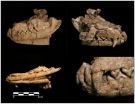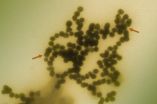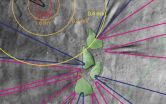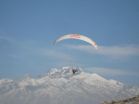(Press-News.org) Biologists have discovered that primitive, predatory lampreys have structures within their gills that play the same role as the thymus, the organ where immune cells called T cells develop in mammals, birds and fish.
The finding suggests that in vertebrate evolution, having two separate organs for immune cell development -- the bone marrow for B cells and the thymus for T cells -- may have preceded the appearance of the particular features that mark those cells, such as antibodies and T cell receptors.
The results will be published Feb. 3 by the journal Nature.
The first author of the paper is postdoctoral fellow Baubak Bajoghli at the Max Planck Institute of Immunobiology and Epigenetics in Freiburg, Germany. The co-senior authors are Thomas Boehm, MD, group leader at the Max Planck Institute, and Max Cooper, MD, professor of pathology and laboratory medicine at Emory University School of Medicine and the Emory Vaccine Center, and a Georgia Research Alliance Eminent Scholar.
"Our research has allowed us to see that lampreys have cells that resemble our T cells and B cells, but until recently, we didn't know where they developed or much about how," says Cooper, who made pioneering studies of the "two-arm" nature of the immune system, including defining the role of the thymus, at the University of Minnesota in the 1960s.
"We can now assume that the lamprey has a dual immune defense system similar to that of humans," says Boehm.
For commercial and recreational fishermen, lampreys represent a threat. For biologists, lampreys represent an opportunity to envision the evolutionary past, because of their status as "living fossils" that haven't changed in millions of years. Lampreys are thought to be an early offshoot on the evolutionary tree, before sharks and fish. Their lack of jaws distinguishes them from sharks or other types of fish.
Despite their primitive nature, lampreys do have a surprisingly sophisticated immune system. Blood cells develop in lampreys' typhlosole, an organ that lies next to the intestine. Lampreys have proteins in their blood that grab on to invaders like our antibodies, but structurally, those proteins don't look like antibodies.
Mammals, birds and fish have two types of immune cells, which each develop in separate places. B cells, which produce antibodies, develop in the bone marrow and fetal liver, while T cells, which recognize their targets by cell-to-cell contact, develop in the thymus. In humans, the thymus is located in the upper chest, under the throat.
The vertebrate thymus is a place where developing T cells must "sink or swim," because immature T cells must rearrange certain genes as part of their development. Most of the cells die because the rearrangement process is imprecise, and cells with improperly rearranged genes are screened out. The Emory/Max Planck team discovered that this same type of screening of non-functional genes appears to be occurring in the lamprey "thymoids" located in the tips of the gill filament.
"We don't know much about how this process is happening, but we were able to show that functional copies are found in the blood, while non-functional copies are only found in the thymoid," Cooper says.
In addition, in cells lining both the vertebrate thymus and lamprey thymoid, a gene is turned on (FOXN1) that is essential for thymus development in mice and humans, the scientists found. Mice that have this gene mutated lack a thymus and are called "nude" mice because they have no hair.
"Taken together, the results suggest that this basic feature of the immune system, where two types of cells develop in separate places, may have evolved before jawed and jawless vertebrates split onto different paths," Cooper says. "Having two companion arms of the immune system may be important so that the two arms can regulate each other and prevent autoimmunity."
###
The research was supported by the Max-Planck Society, the German Research Foundation, the National Institutes of Health and the Georgia Research Alliance.
END
They are entirely too small to be seen even with the most powerful microscope. But now an international research team has managed to capture an image of an intact virus and a membrane structure from a photosynthetic bacterium with the aid of extremely intensive and ultra-short x-ray pulses from the world's first free electron laser. This new advance in structural biology is being published today in two articles in the journal Nature.
The findings for the two studies pave the way for studies of biological structures at the molecular level, including viruses, individual ...
– Early, correct diagnosis is the best way to prevent the development of Lyme arthritis in individuals with the tick-borne illness, according to a paper published in the Journal of the American Academy of Orthopaedic Surgeons (JAAOS). In patients who do develop the condition, most cases can be treated successfully with antibiotics, the review found.
"Lyme arthritis occurs commonly in patients with Lyme disease and should be considered when evaluating patients with joint complaints and who live in areas where the disease occurs," said study author Aristides Cruz, MD, ...
Fifteen members of the Entomological Society of America (ESA) gave presentations at the "Second Annual National Bed Bug Summit: Advancing Towards Solutions to the Bed Bug Problem," held by the U.S. Environmental Protection Agency (EPA) in Washington, DC, February 2, 2011.
The meeting focused on what is being done to combat bed bugs, the importance of educating consumers, improvements in prevention and control techniques, controlling bed bugs in schools and public housing, and on the state of bed bug knowledge and futue research needs.
"Many health departments are overwhelmed ...
PHILADELPHIA – A simple test performed at the sideline of sporting events can accurately detect concussions in athletes, according to study by researchers at the University of Pennsylvania School of Medicine. Current sideline tests can leave a wide amount a brain function untested following concussion. Penn researchers showed that this simple test was superior to current methods and accurately and reliably identified athletes with head trauma. The study appears online now in Neurology.
The one-minute test involves the athlete reading single digit numbers displayed on index-sized ...
Food scientists at the University of British Columbia have been able to pinpoint more of the complex chemistry behind coffee's much touted antioxidant benefits, tracing valuable compounds to the roasting process.
Lead author Yazheng Liu and co-author Prof. David Kitts found that the prevailing antioxidants present in dark roasted coffee brew extracts result from the green beans being browned under high temperatures.
Their findings will appear in a forthcoming issue of Food Research International and can be previewed at: http://dx.doi.org/10.1016/j.foodres.2010.12.037
Liu ...
TORONTO, ON – Anthropologists at the University of Toronto and the University of Cambridge have discovered the oldest cemetery in the Middle East at a site in northern Jordan. The cemetery includes graves containing human remains buried alongside those of a red fox, suggesting that the animal was possibly kept as a pet by humans long before dogs ever were.
The 16,500-year-old site at 'Uyun al-Hammam was discovered in 2000 by an expedition led by University of Toronto professor Edward (Ted) Banning and Lisa Maher, an assistant professor of anthropology at U of T and research ...
HOUSTON (Feb. 2, 2011) -- For women seeking pregnancy by assisted reproductive technologies, such as in-vitro fertilization (IVF), a new study shows that the health of the uterus is more relevant than egg quality for a newborn to achieve normal birth weight and full gestation. This study, published in Fertility and Sterility, an international journal for obstetricians, offers new information for women with infertility diagnoses considering options for conceiving.
The study was conducted by Dr. William Gibbons, director of The Family Fertility Program at Texas Children's ...
The same properties that make engineered nanoparticles attractive for numerous applications—small as a virus, biologically and environmentally stabile, and water-soluble—also cause concern about their long-term impacts on environmental health and safety (EHS). One particular characteristic, the tendency for nanoparticles to clump together in solution, is of great interest because the size of these clusters may be key to whether or not they are toxic to human cells. Researchers at the National Institute of Standards and Technology (NIST) have demonstrated for the first time ...
Pasadena, Calif.—The brain—awake and sleeping—is awash in electrical activity, and not just from the individual pings of single neurons communicating with each other. In fact, the brain is enveloped in countless overlapping electric fields, generated by the neural circuits of scores of communicating neurons. The fields were once thought to be an "epiphenomenon, a 'bug' of sorts, occurring during neural communication," says neuroscientist Costas Anastassiou, a postdoctoral scholar in biology at the California Institute of Technology (Caltech).
New work by Anastassiou ...
SALT LAKE CITY, Feb. 2, 2011 – During the past two months, researchers launched weather balloons, drove instrument-laden cars and flew a glider to study winter inversions that often choke Salt Lake City in smog and trap dirty air in other urban basins worldwide.
The field campaign – part of a three-year study by the University of Utah and other institutions – ends Monday, Feb. 7 as atmospheric scientists begin analyzing data they collected to learn how weather conditions contribute to inversions, which occur when warmer air aloft holds cold air ...



